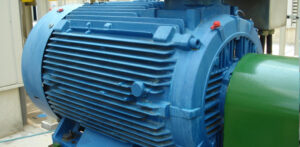Hipot and Surge Tests for High Voltage Motors
Surge Tests for High Voltage Motors
From a layman’s perspective, a motor simply needs to provide a steady stream of power. That power comes from a combination of the voltage and amperage values in the motor. Increasing one value tends to reduce the other, and doing so results in reduced performance, lower efficiency or even failure over time.
When maintenance professionals need to evaluate an electric motor’s integrity, they can run a hipot or surge test at a higher voltage than the nameplate rating. While it may seem counterintuitive to expose the equipment to a greater amount of energy than what it was designed for, doing so can help pinpoint early signs of insulation weakness.
The key is to use a method that provides the most accurate representation of the actual temperature changes experienced by a motor during operation. A thermal model is required to capture this information. To develop the model, copper losses must be calculated for both the stator and rotor conductors. These are derived from the current flow, which varies as power dissipation in the circuit increases or decreases with temperature.

Hipot and Surge Tests for High Voltage Motors
In addition to providing an accurate picture of the motor’s temperature behavior, the model must also account for variations in air and water cooling systems. For example, the XLPE-clad cable-wound stator of a high voltage motor has to be capable of operating under much higher temperatures than those of conventional low voltage motors. That means the motor must have the capacity to utilize either air-cooling at lower power levels or water-cooling under high power conditions.
Regardless of the application, the model must also allow for easy integration into the motor control system. For instance, the XLPE-clad stator of a high voltage motor requires a much thicker insulation layer than that of a conventional two-pole three-phase AC motor. This requires the model to be able to take into account the increased impedance of the windings, as well as the effect that this will have on the current draw.
Fortunately, ABB’s Motorformer product has been designed to address all of these challenges. It has been installed in rugged industrial settings and is currently cutting plant energy losses by 25%, according to the company. In fact, the first application of this technology was used to drive a compressor at an air separation plant in Sweden. Unlike some traditional motors that are limited to specific applications and power levels, Motorformer is suitable for virtually any application with inputs of up to 70 kV. That makes it the ideal choice for high voltage motors, or VHV, as they are sometimes called.